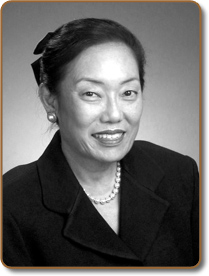 Amongst people of color, especially in the middle range of color, hyperpigmentation is one of the most disturbing changes of the skin. It may be that the hyperpigmentation is more obvious in contrast to the background skin. There are definitely pigment cells or “melanocytes” that are very reactive to injury whether from sun or trauma.
Amongst people of color, especially in the middle range of color, hyperpigmentation is one of the most disturbing changes of the skin. It may be that the hyperpigmentation is more obvious in contrast to the background skin. There are definitely pigment cells or “melanocytes” that are very reactive to injury whether from sun or trauma.
In the Asian population, hyperpigmentation is a distinct skin malady. If you are a darker-skinned person, one is less likely to be revered. Purity is linked to a whiter, even-toned skin. It can even be a key factor in the arranged marriages that are still common in much of Southeast Asia. In America many of the immigrants who darken readily in the sun are seen using umbrellas, long sleeves, gloves, and sun hats to decrease darkening of the skin.
Age spots or sunspots or “lentigines” develop after a few years of repeated sun exposure that causes an additive pigment effect on the skin. Once the brown spots develop they will grow larger if left alone. Moreover, once these unwanted spots develop, more and more brown spots will come whenever the person goes in the sun.
 Thus, in order not to progress, it is important to constantly use sunscreens, hats, and other protective clothing. Not all sunscreens are equal. Browning of skin over the background areas is called “melasma”. Melasma can be produced from repeated sun exposure or when a female is on oral contraceptives. For melasma or for lentigines, one needs to not only block the short ultraviolet rays (UVB), but very importantly, the long ultraviolet rays (UVA).
Thus, in order not to progress, it is important to constantly use sunscreens, hats, and other protective clothing. Not all sunscreens are equal. Browning of skin over the background areas is called “melasma”. Melasma can be produced from repeated sun exposure or when a female is on oral contraceptives. For melasma or for lentigines, one needs to not only block the short ultraviolet rays (UVB), but very importantly, the long ultraviolet rays (UVA).
Most of the sunscreens block UVB well, if they are above 15 to 30 SPF (Sun Protective Factor) and stays on well. UVB are rays that are seasonal, mainly around summer months, and are blocked over 70% by window or car glass. However, the UVA rays go deeper into the skin, passing through the pigment layer and causing an increase of color. UVA rays are equal year-round, are not blocked by window or car glass, go into the dermis to damage the collagen and elastic tissue and hit our immune cells that reside in the capillaries of the dermis. It is important to wear sunscreen year round in sufficient quantity and to re-apply every 2 to 4 hours.
Methods to reduce hyperpigmentation are many. For the medium-skinned individual, one has to have a great deal of patience. In many cases the coloration will be reduced with a combination therapy. If the hyperpigmentation is milder, topical medications can be successful. These include hydroquinone, azelaic acid, kojic acid/ kojic dipalmitate, arbutin, retinoids, peptides, coffee berry, glucosamine, niacinamide, and other anti-oxidants. Since physicians can use a higher percentage of the active ingredient(s), if you have moderate or severe pigmentation, you may want to seek the care of a dermatologist.
There is a new important oral capsule that works in conjunction with the sunscreens to protect the skin from sun. The active ingredient, Polypodium leucotomas, comes from a fern from South and Central America. It works as a strong anti-oxidant to protect the skin from the sun. Whenever one is in the sun, you take this capsule and repeat every 2-3 hours while in the sun.
If moderate or severe hyperpigmentation exists, one may need to be seen by a dermatologist. In these more involved cases, a combination therapy of topical skin lightening agents, sunscreens, liquid nitrogen, electrodesiccation, microdermabrasion, and laser therapy may be used. Cosmetic camouflage is useful while waiting for the pigmentation to be reduced.
With a great deal of patience and the use of methods to protect from the sun, the therapies will improve the hyperpigmentation. Patience is the key for the person with hyperpigmentation and also for the physician.
CLICK HERE to view photographs of this condition

